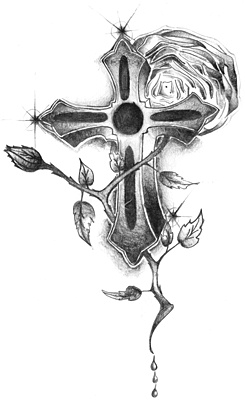All Nonfiction
- Bullying
- Books
- Academic
- Author Interviews
- Celebrity interviews
- College Articles
- College Essays
- Educator of the Year
- Heroes
- Interviews
- Memoir
- Personal Experience
- Sports
- Travel & Culture
All Opinions
- Bullying
- Current Events / Politics
- Discrimination
- Drugs / Alcohol / Smoking
- Entertainment / Celebrities
- Environment
- Love / Relationships
- Movies / Music / TV
- Pop Culture / Trends
- School / College
- Social Issues / Civics
- Spirituality / Religion
- Sports / Hobbies
All Hot Topics
- Bullying
- Community Service
- Environment
- Health
- Letters to the Editor
- Pride & Prejudice
- What Matters
- Back
Summer Guide
- Program Links
- Program Reviews
- Back
College Guide
- College Links
- College Reviews
- College Essays
- College Articles
- Back
Crucifix-ation
There was a time when wearing a cross necklace would indicate that a person was a Christian. In fact, not long ago (and still in some parts of the world today), this simple act would get the wearer tortured or killed for expressing their religious beliefs. Now, it is hard to go into town without seeing a shop selling them as an item of fashionable jewellery.
It begs the question: do people really understand the symbolism of what they’re wearing? Of course, there are those who want to be reminded of their religious beliefs and what the cross means for them, and that should be respected and encouraged. But what about those who cover themselves with images of crosses simply because it’s fashionable?
In the ancient times, crucifixion was a form of extreme torture and one of the most severe sentences for any crime. In fact, it’s where we get the word “excruciating” from, which literally means “out of crucifying”. I’d like to warn anyone who is particularly squeamish to skip to the end of this article, because the following information is not pleasant.
First of all, the victim was forced to carry their cross, weighing well over 135kg (around 50 bricks), to the place of execution, which was often on the top of a hill where their death could be seen by many. Crucifixions were very public affairs, intended to deter criminals with the severity of the punishment for their crimes. As well as being a death sentence, it was also humiliating. Criminals were crucified naked, exposed to the stares of those watching and the harsh glare of the sun.
Once the cross was set up, the person had metal spikes hammered through their wrists and ankles to attach them to the wood of the cross. This was in the days of no painkillers, and yet this wasn’t even the most agonising part of the punishment. How did the victim actually die? There were many causes of death during crucifixion, including blood poisoning from the nails, heart failure and being preyed on by animals. But the most common reasons for death were actually suffocation, dehydration and exhaustion.
The victim’s entire body weight was supported by their arms. If they were lucky, their feet were nailed to a wooden block which helped to hold them up, but this was rare. Eventually, the person could not hold their chest up any longer and they collapsed, confining their lungs. They would then die from suffocation within minutes. Yet for a strong man, death could take up to a week. In fact, some merciful soldiers would break the legs of those being crucified in order to speed up their death.
So think more carefully about your fashion choices. It’s admirable to want to display your religious beliefs, and I would argue that schools and workplaces should encourage people who make this sort of statement. But to those who wear crosses because they’re in fashion: would you wear an electric chair around your neck?
And yet I would argue that crucifixion is a far more ‘excruciating’ way to die.

Similar Articles
JOIN THE DISCUSSION
This article has 0 comments.
